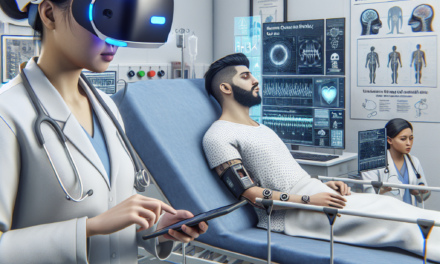Preventing Back Surgery: The Role of a Spine Specialist in Secaucus
Back pain is a common ailment that affects millions of people worldwide. For many, the thought of surgery looms as a last resort when conservative treatments fail. However, the role of a spine specialist in Secaucus can be pivotal in preventing unnecessary surgical interventions. This article explores the various ways spine specialists can help patients manage their back pain effectively, emphasizing the importance of early intervention, comprehensive treatment plans, and patient education.
Understanding Back Pain: Causes and Symptoms
Back pain can arise from a multitude of causes, ranging from acute injuries to chronic conditions. Understanding these causes is crucial for effective treatment and prevention strategies.
Common Causes of Back Pain
Back pain can be categorized into two main types: acute and chronic. Acute back pain typically results from an injury or strain, while chronic back pain persists for more than three months. Here are some common causes:
- Muscle or Ligament Strain: Heavy lifting or an awkward movement can strain back muscles and spinal ligaments.
- Herniated Discs: Discs act as cushions between the vertebrae. When they rupture or bulge, they can press on nerves, causing pain.
- Arthritis: Osteoarthritis can lead to narrowing of the space around the spinal cord, known as spinal stenosis.
- Skeletal Irregularities: Conditions like scoliosis can lead to uneven pressure on the spine, resulting in pain.
- Osteoporosis: This condition weakens bones, making them more susceptible to fractures, which can cause back pain.
Symptoms of Back Pain
Symptoms can vary widely among individuals, but common signs include:
- Localized pain in the lower back or upper back.
- Pain that radiates down the legs (sciatica).
- Stiffness or reduced range of motion.
- Muscle spasms.
- Weakness or numbness in the legs.
Recognizing these symptoms early can lead to timely intervention by a spine specialist, potentially preventing the need for surgery.
The Importance of Early Intervention
Early intervention is critical in managing back pain effectively. Spine specialists in Secaucus emphasize the need for patients to seek help as soon as symptoms arise.
Why Early Intervention Matters
Delaying treatment can lead to worsening symptoms and more complex issues. Here are several reasons why early intervention is essential:
- Prevention of Chronic Pain: Early treatment can prevent acute pain from developing into a chronic condition, which is often more challenging to treat.
- Improved Quality of Life: Addressing pain early can help individuals maintain their daily activities and overall quality of life.
- Cost-Effectiveness: Early intervention can reduce the need for more expensive treatments, including surgery and long-term medication.
- Better Outcomes: Patients who seek early treatment often experience better outcomes and faster recovery times.
How Spine Specialists Facilitate Early Intervention
Spine specialists play a crucial role in early intervention through:
- Comprehensive Assessments: They conduct thorough evaluations to determine the underlying causes of back pain.
- Personalized Treatment Plans: Based on the assessment, specialists create tailored treatment plans that may include physical therapy, medication, or lifestyle changes.
- Patient Education: Educating patients about their condition empowers them to take an active role in their recovery.
By prioritizing early intervention, spine specialists can significantly reduce the likelihood of surgical interventions.
Conservative Treatment Options
Before considering surgery, spine specialists often recommend conservative treatment options. These methods can be highly effective in managing back pain and improving function.
Physical Therapy
Physical therapy is one of the most common conservative treatments for back pain. A physical therapist can design a program tailored to the patient’s specific needs, focusing on:
- Strengthening Exercises: Building core strength can provide better support for the spine.
- Flexibility Training: Stretching exercises can improve flexibility and reduce tension in the back muscles.
- Posture Correction: Therapists can teach patients how to maintain proper posture to alleviate strain on the back.
Research shows that patients who engage in physical therapy often report significant improvements in pain levels and functionality. A study published in the Journal of Orthopaedic & Sports Physical Therapy found that patients who participated in physical therapy had a 50% reduction in pain after just six weeks of treatment.
Medications
Over-the-counter and prescription medications can also play a role in managing back pain. Common options include:
- Nonsteroidal Anti-Inflammatory Drugs (NSAIDs): Medications like ibuprofen and naproxen can reduce inflammation and alleviate pain.
- Muscle Relaxants: These can help relieve muscle spasms that often accompany back pain.
- Antidepressants: Certain antidepressants have been found to be effective in treating chronic pain conditions.
While medications can provide relief, they should be used in conjunction with other treatments for optimal results. Spine specialists often monitor patients closely to adjust medications as needed.
Alternative Therapies
In addition to traditional treatments, many patients find relief through alternative therapies. These may include:
- Chiropractic Care: Chiropractors use spinal manipulation to improve alignment and relieve pain.
- Acupuncture: This ancient practice involves inserting needles into specific points on the body to relieve pain.
- Massage Therapy: Therapeutic massage can help reduce muscle tension and improve circulation.
While the effectiveness of alternative therapies can vary, many patients report positive outcomes. A systematic review published in the Cochrane Database of Systematic Reviews found that acupuncture can be effective for chronic low back pain, providing a non-invasive option for patients.
The Role of Patient Education
Patient education is a cornerstone of effective back pain management. Spine specialists in Secaucus prioritize educating their patients about their conditions and treatment options.
Empowering Patients
When patients understand their conditions, they are more likely to engage in their treatment plans actively. Education can include:
- Understanding Anatomy: Teaching patients about the spine’s structure can help them comprehend their pain better.
- Recognizing Symptoms: Patients learn to identify when their symptoms are worsening and when to seek help.
- Lifestyle Modifications: Education on ergonomics, exercise, and nutrition can empower patients to make healthier choices.
For example, a spine specialist may provide guidance on proper lifting techniques to prevent injuries at work or home. This proactive approach can significantly reduce the risk of future back problems.
Support Groups and Resources
Spine specialists often recommend support groups and resources to help patients cope with their conditions. These may include:
- Local Support Groups: Connecting with others who experience similar challenges can provide emotional support.
- Online Resources: Websites and forums dedicated to back pain can offer valuable information and community support.
- Educational Workshops: Many specialists host workshops to educate patients about back health and pain management strategies.
By fostering a supportive environment, spine specialists can help patients feel less isolated and more empowered in their journey toward recovery.
When Surgery Becomes Necessary
While the goal is to prevent surgery, there are instances where surgical intervention may be necessary. Understanding these situations can help patients make informed decisions.
Indications for Surgery
Surgery is typically considered when conservative treatments have failed, and the patient experiences:
- Severe Pain: Pain that significantly impacts daily activities and quality of life.
- Nerve Damage: Symptoms such as weakness, numbness, or loss of bladder/bowel control may indicate nerve compression.
- Structural Issues: Conditions like severe herniated discs or spinal stenosis that do not respond to non-surgical treatments.
In these cases, spine specialists will conduct thorough evaluations to determine the most appropriate surgical options. Common procedures include:
- Laminectomy: Removal of a portion of the vertebra to relieve pressure on the spinal cord or nerves.
- Discectomy: Removal of herniated disc material to alleviate nerve compression.
- Spinal Fusion: Joining two or more vertebrae to stabilize the spine.
Post-Surgery Rehabilitation
For those who do undergo surgery, rehabilitation is crucial for recovery. Spine specialists often work closely with physical therapists to develop post-operative rehabilitation plans that may include:
- Gradual Return to Activity: Patients are guided on how to safely resume daily activities and exercise.
- Pain Management: Ongoing pain management strategies are discussed to ensure comfort during recovery.
- Monitoring Progress: Regular follow-ups help track recovery and address any concerns promptly.
While surgery can be effective, it is always considered a last resort after exploring all conservative options. The expertise of a spine specialist is invaluable in navigating these decisions.
Conclusion: The Path to a Pain-Free Life
Preventing back surgery is a multifaceted approach that involves early intervention, conservative treatment options, patient education, and, when necessary, surgical intervention. Spine specialists in Secaucus play a crucial role in guiding patients through this process, ensuring they receive the best possible care tailored to their individual needs.
By understanding the causes of back pain, recognizing the importance of early intervention, and exploring conservative treatment options, patients can take proactive steps toward managing their pain effectively. Education empowers patients to make informed decisions about their health, fostering a collaborative relationship with their spine specialists.
Ultimately, the goal is to help individuals lead pain-free lives, minimizing the need for surgical interventions. With the right support and resources, patients can navigate their journey toward recovery with confidence and hope.





